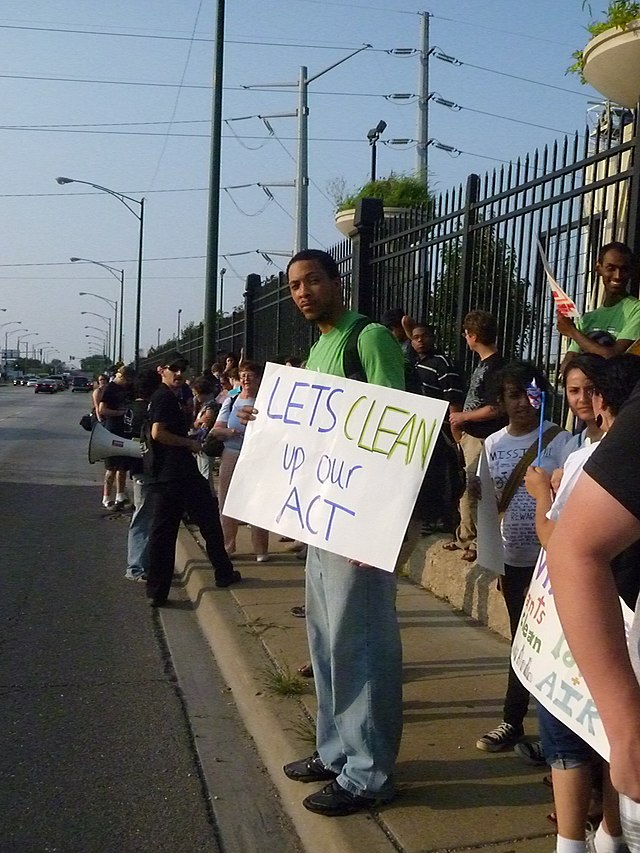
By
Access to clean air is a fundamental human right. Unfortunately, not everyone has access to clean air.
Across the U.S., air pollution threatens the health and safety of millions of Americans, and those threats are not felt equally. Your race or zip code should not determine your life expectancy or the quality of the air you breathe.
The release of the 2023 “State of the Air” report from the American Lung Association sheds a light on disparities in air quality and makes clear that stronger national standards are essential for a healthy future for everyone — no matter who or where you are.
As the senior vice president for justice & equity at Environmental Defense Fund, I have over 20 years of experience assessing children’s health disparities and environmental inequalities. My experience has shown the injustices Black communities face when it comes to health and safety — and the necessity of action at every level to build a safer, healthier future.
According to the “State of the Air” report, more than 1 in 3 people living in the United States live in communities with unhealthy air quality levels. Of the nearly 120 million people who live in areas with unhealthy air quality, more than 64 million — 54% — are people of color.
By county, these disparities are especially stark: people of color are 3.7 times more likely to live in a county with failing grades across three metrics for air pollution.
Worsening air pollution is tied inextricably to climate change.
Poor air quality is a serious health threat. We know that soot and air pollution are linked to asthma attacks, heart disease, strokes, lung cancer, respiratory illness, and higher rates of infant mortality. And worsening air pollution is tied inextricably to climate change.
Climate change is a threat multiplier that builds upon injustices and puts those who are vulnerable at even greater risk. So, what can we do to close the air quality gap and help ensure clean air for every community? It starts with combatting climate change and the negative effects it has on our air.
Burning fossil fuels is the largest driver of climate change — and a massive source of air pollution for communities located near emitting facilities, roadways, and other industrial sources. In addition, hotter conditions and lack of rainfall increase the risk of drought and wildfires, both of which create soot in our air.
Black children are more than twice as likely to have asthma.
Stagnant air and hotter temperatures also create the perfect conditions to increase ozone levels, which creates smog and can lead to asthma. We can see severe disparities when looking at asthma amongst races, especially in children. Black children are more than twice as likely to have asthma, at a rate of 15.7%, compared to white children at 7.1%.
President Biden’s clean energy plan — which includes the combined investments from the Bipartisan Infrastructure Law and Inflation Reduction Act — has unlocked nearly $550 billion for climate action and solutions.
This funding is creating a once-in-a-generation opportunity to address historic injustices and modernize our infrastructure to support a future where every community can thrive.
Air pollution disproportionately impacts Black communities, but it does not have to be this way.
We are already beginning to see progress and its transformational benefits. Earlier this month, U.S. Environmental Protection Agency Administrator Regan introduced new proposed vehicle pollution standards that will save lives while advocating for the transition to cleaner sources of energy. This is also creating thousands of jobs.
As the 2023 State of the Air report tells us, air pollution disproportionately impacts Black communities, but it does not have to be this way. As we seize this notable opportunity to advance health equity, jobs, and justice, it is more important than ever to make sure we are engaged in the regulatory process.
The president’s Justice40 commitment, paired with the clean energy plan, puts us on the path to achieving major climate pollution reductions that will improve our health and help stabilize the climate.
Every day we see important steps forward to ensure that the strongest possible pollution standards are set to be enforced. Join us at edf.org/action to stay up to date and leave comments directly with the administration.
Remember, your vote is your voice. As we celebrate this monumental opportunity for health equity and justice, we must remember our responsibility to protect the progress made by electing leaders who will act with the urgency the climate crisis and environmental injustice demands.


